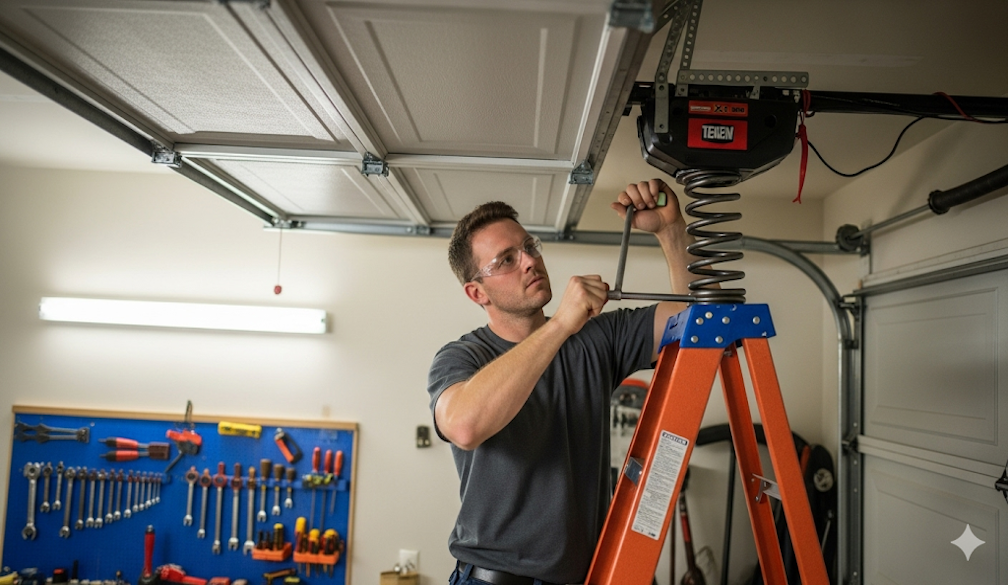Garage Door Torsion Springs: What They Are and Why They Matter

Garage doors might seem simple, but they rely on a system of components that work together to provide smooth and balanced movement. One of the most vital parts of this system is the garage door torsion springs. These springs play a key role in lifting and lowering your garage door safely and efficiently. When they malfunction or wear out, the entire operation of your garage door can be compromised—posing not only inconvenience but also safety risks.
Understanding Garage Door Torsion Springs
Garage door torsion springs are mounted horizontally above your garage door, attached to a torsion bar. As the door opens or closes, the springs wind and unwind, using torque to counterbalance the weight of the door. This stored energy helps lift heavy garage doors with minimal effort and ensures controlled descent when closing.
Without functioning torsion springs, the motor and other components would have to handle the full weight of the door—which often ranges from 70 to 150 kilograms or more. Over time, this could cause damage to the opener and lead to serious mechanical issues.
How Torsion Springs Work
The design of garage door torsion springs revolves around tension. When you close your garage door, the springs are wound tighter, storing energy. When you open the door, the springs release that tension, which assists in lifting the door.
This system provides better balance and smoother operation compared to extension springs, which stretch and contract. Most modern garage doors, especially sectional and insulated models, are now fitted with torsion springs due to their durability and controlled movement.
Why Torsion Springs Are Safer and More Durable
Compared to other spring types, garage door torsion springs offer several advantages:
Longer lifespan: Torsion springs can last up to 15,000–20,000 cycles (a cycle is one open and close), while extension springs usually last around 10,000.
Better control: Torsion springs allow the door to move more evenly and reduce jerking motions.
Increased safety: Since the springs are mounted on a shaft, there's less risk of them snapping and flying loose compared to extension springs.
Space efficiency: Torsion spring systems are often more compact and better suited to smaller garages or tight installations.
Signs Your Garage Door Torsion Springs May Be Failing
Like any mechanical component, torsion springs wear out over time. Look out for these warning signs:
The door opens only a few centimetres and then stops
You hear loud bangs from the garage (a sign of a broken spring)
The door feels unusually heavy when opening manually
Visible gaps in the spring coil
Crooked or uneven door movement
If any of these occur, it’s essential to stop using the door immediately and have it inspected. A broken garage door torsion spring can cause serious injury if the door suddenly drops or slams shut.
Can You Replace Torsion Springs Yourself?
Although DIY tutorials exist, replacing garage door torsion springs is not recommended unless you’re trained. These springs are under immense tension and can cause injury if handled incorrectly. Professional garage door technicians have the tools and experience to safely remove, measure, and install new springs.
Improper spring installation can lead to:
Unbalanced doors
Increased strain on the garage opener
Early wear and tear on parts
Voiding the warranty on your garage system
Choosing the Right Garage Door Torsion Springs
If your spring does need replacing, it's not a one-size-fits-all solution. You’ll need to consider:
Door weight and height: These determine the strength and length of the spring.
Wire size and inside diameter: These measurements must be exact.
Wind direction: Torsion springs come in left- and right-wound variations depending on the side of the door they’re mounted on.
A reputable technician will measure the old spring or door and match it precisely to the right replacement.
Preventative Maintenance for Torsion Springs
While you can’t stop garage door torsion springs from eventually wearing out, you can extend their life with some basic maintenance:
Apply spring lubricant every 6 months to reduce friction and prevent rust
Avoid overusing the garage door (limit opening/closing cycles)
Have the door inspected annually for balance and tension
Listen for odd sounds like creaks or grinding, which may indicate spring stress
Taking proactive steps can help avoid sudden failures and save on emergency repair costs.
The Cost of Torsion Spring Replacement
The cost of replacing garage door torsion springs depends on factors like the size and weight of the door, the type of spring, and whether both springs need replacement. While some doors have only one torsion spring, many double-spring systems require replacing both at once to maintain even tension.
Professional replacement costs typically include:
Labour
Spring parts
Disposal of old components
Adjustment and testing of the door
While you may be tempted to shop for the cheapest solution, using inferior springs or skipping professional service can lead to more problems down the road.
Final Thoughts on Garage Door Torsion Springs
Garage door torsion springs are one of those unseen yet crucial parts of your home’s functionality. Without them, even the most powerful garage door opener would struggle. Whether you’re dealing with an old spring nearing the end of its lifespan or just looking to understand how your garage system works, it pays to know the role these components play.
If you suspect issues, call a garage door expert to assess and fix the problem safely. With proper care and quality components, your garage door can continue to operate smoothly for years to come.





